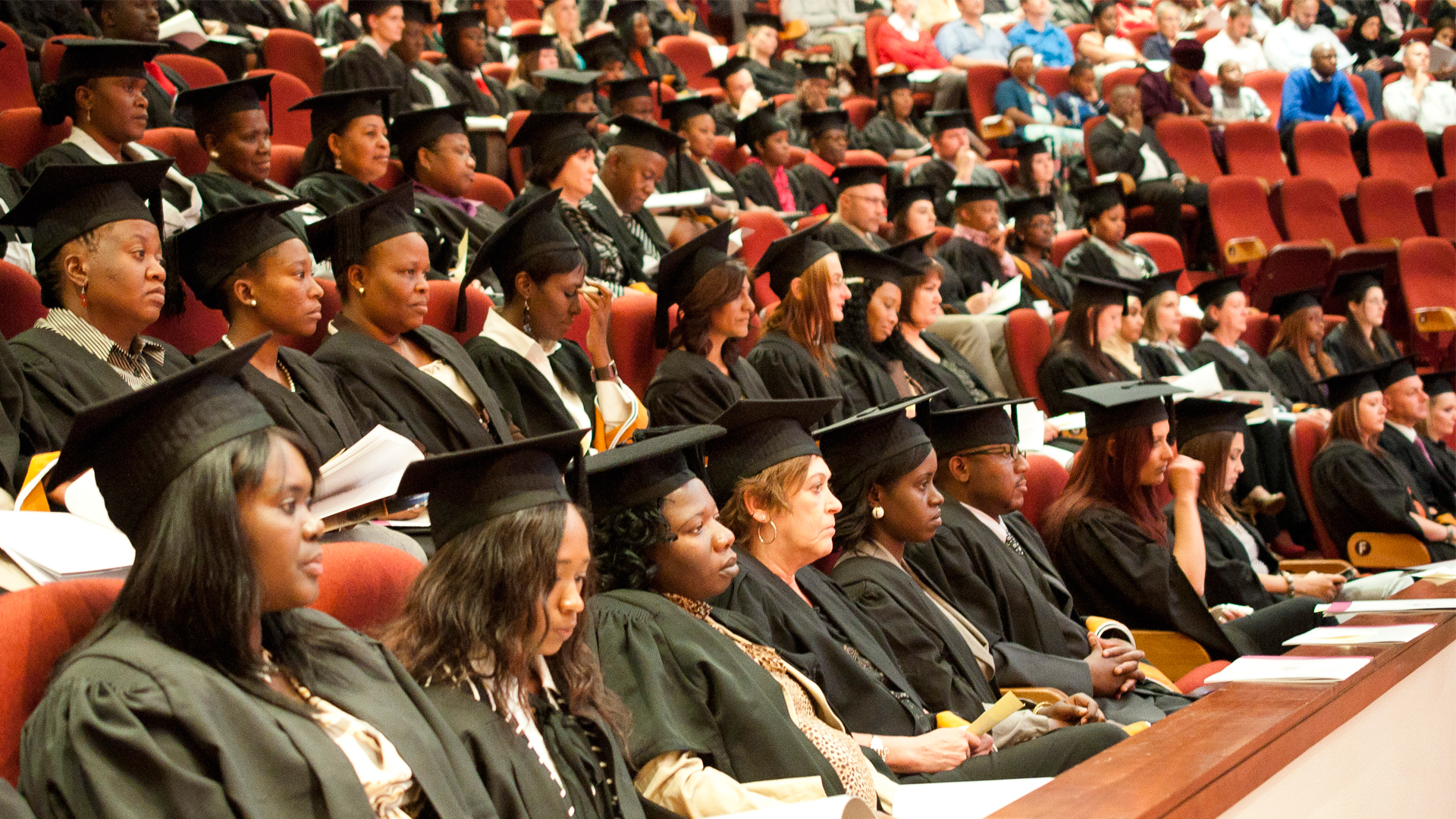Student life
To speak of student life at a distance learning institution might seem to be a contradiction in terms, but Unisa has a long history of students both socialising and independently convening. In the decades before it offered its own distance learning curricula, Unisa provided examinations not only for its constituent colleges, but also for external students attached to a range of correspondence and after-hours learning centres. In 1939, the Ministry of Education drafted a discriminatory ruling that Unisa’s external students would be required to study for a year longer than its internal ones. A nationwide barrage of angry letters and newspaper editorials followed, and the Ministry dropped the ruling.
Later, during the apartheid era, students would engage in militant protests on campus grounds. This tradition of protest has extended into more recent years, with students rallying physically around issues that have included racial transformation, registration processes and government funding for students in need.
The Internet and social media enable virtual forms of student life, and cultural, sports and networking events provide face-to-face interaction. Unisa’s ever-growing number of hubs and campuses provides an expanding interface for student life in its more traditional form.
